11 Types of Cantaloupe Varieties That Refresh & Excite You
Author: Anne Cowart | Editor: Omar Alonso
Review & Research: Jen Worst & Chris Miller

People call the types of cantaloupe by many names, including muskmelons, sweet melons, rockmelons, or Cucumis melo (that is the scientific name).
These refreshing summer fruits are all grouped as cantaloupes and get their name from the Italian Papal residence of Cantalupo. They have sticky insides and hard shells. The specifics depend on their individual place of origin but cantaloupes do grow better in warm environments.
The soil must be well tilled and well drained. Cantaloupe plants need about eight hours of sunlight every day and if you live in a cold-weather region, cover the soil so that it can retain warmth.
One of the most important things about planting cantaloupes is that you cannot relocate the seeds. That usually ends up in the roots giving up and the plant dies.
11 Types of Cantaloupe
We don't know exactly where and when cantaloupe cultivation started, but we know in ancient Egypt cantaloupes were being domesticated around 2,400 BC.
These are typically summer fruits but there are cantaloupe varieties that grow at different times of the year, including winter melons, that are perfect for backyard farming as long as you know the best time to plant fruit trees. Let’s take a look.
European Cantaloupe
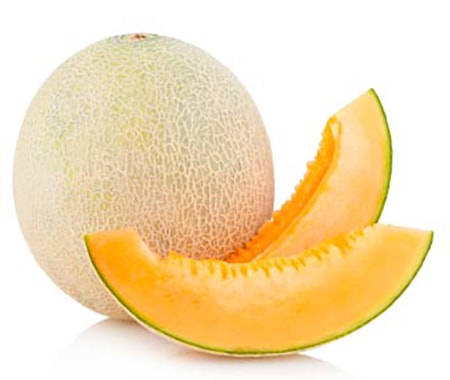
Often called the ‘true cantaloupe,’ European cantaloupes have smooth light colors with green stripes on the outside with tough rinds that are usually slightly netted. But there are no crisscross patterns. Their scent is sweet and musky.
Their scientific name is Cucumis melo cantalupensis and these cantaloupe types are said to arrive from Italy or Africa or even Asia. But they are named European because that is where they were harvested after they arrived from where they were originally sourced.
Asian Cantaloupe
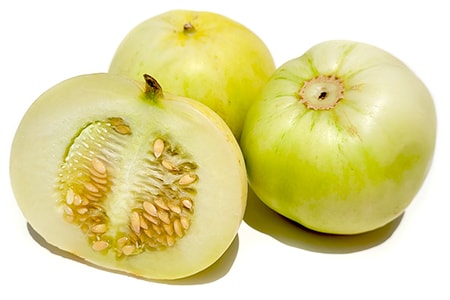
These cantaloupes are believed to have traveled to Europe but originated in the Persian region of Asia. That is why it is called Persian melon or Hami melon in those areas.
The fruit is sweet and musky. This one is not as deeply netted as the North American cantaloupe and is in a pale green color or yellow in the background and the flavor is more delicate. The flesh is a bit crispy, unlike the North American cantaloupe which is soft and pulpy.
Japanese Cantaloupe
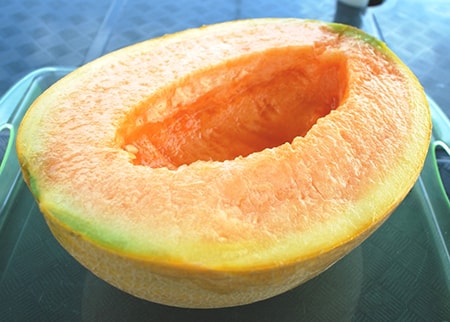
These cantaloupes are typically called the crown melon because of their size. They are locally called the Yubari King melon because they are cultivated in a small Japanese town of the same name.
Scientifically referred to as Cucumis melo L. var. reticulatus, these different kinds of cantaloupe are extremely expensive and a bit of a status symbol which makes them more suitable for royals. You can see why they have the word 'king' in the name.
These fruits are also commonly exchanged as gifts by the rich because they are luxury items. They are not just very tasty but also very pretty-looking.
These cantaloupes are cultivated with great care and it is a labor-intensive process. The stems are pruned to the same lengths, the seeds are manually pollinated and the fruits are massaged by hand.
Japanese cantaloupes have an unbelievable smooth outer shell and are perfectly round in shape. The flesh inside is pale yellow or orange and are packaged in an aesthetically pleasing manner. These little guys easily sell for over $200 a pop.
North American Cantaloupe
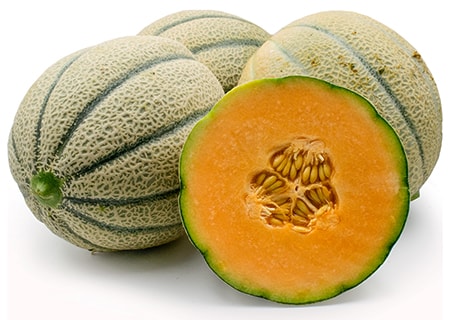
On the contrary, some say these are not cantaloupes at all. But North Americans strongly argue otherwise. Scientifically named Cucumis melo reticulatus, these fruits have a rough skin over a pale yellow shell. The rind or the outer shell is not as hard as the European ones but the flavors and smell are similar.
These cantaloupes have a raised netting which becomes more prominent as the fruit gets ripe and the outer shell starts to turn from green to a tan color. The flesh remains orange and juicy.
Charentais Cantaloupe

Say hello to the signature French melon that originated in the Poitou-Charentes region in western France. It is supposed to be one of the best types of cantaloupes ever produced and is said to beat all other varieties in terms of flavor, aroma and texture.
It's the size of a grapefruit and weighs about two pounds on average and is clearly smaller than most other melons. It's smooth on the outside in a stony creamy-gray color with light green ribs.
The flesh is dense and in a bright salmon-orange color. This particular cantaloupe variety is high in sugar content and very fragrant.
Scientifically called Cucumis melo cantalupensis, a lot of the production of these cantaloupes is done in North Africa. They are available in the summer and are crowd pleasers because they contain a good amount of beta-carotene, folic acid, and dietary fiber.
Different Types of Cantaloupe - The Relatives
Let’s introduce you to the family. Cantaloupes have a few cousins and a couple of hybrid varieties. Here’s a look.
Galia Cantaloupe
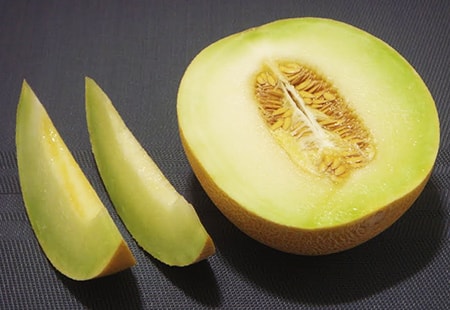
Then there are these cantaloupes that originate in Israel. They are very popular in Southeast Asia and are locally known as sarda. There is some debate over their status as cantaloupe varieties.
The flesh of these fruits is sweet and in pale yellow or green color. Scientifically called the Cucumis melo var. reticulatus, these cantaloupes are a hybrid of cantaloupes and a melon.
Interestingly, they look like a cantaloupe on the outside and a honeydew melon on the inside. They are smaller than European and North American cantaloupes.
It is recommended that they be consumed fresh and chilled. They have a range of vitamins, minerals, and bioflavonoids. They are also low in calorie count and contain no fats. These melons are popular as a choice of dessert in many South Asian countries.
Oriental Melon
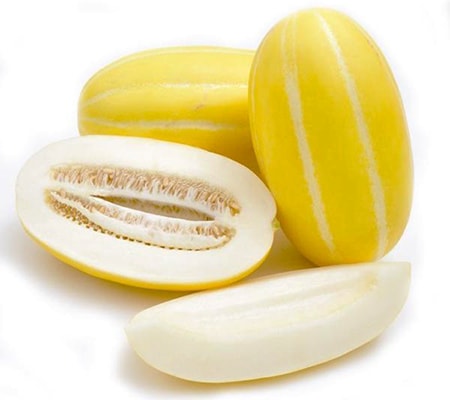
The Conomon melon, often referred to as Korean melons, have a bright yellow coloring with a lighter color of yellow (sometimes almost white) striped down from stem to bottom all around it in equal spacings.
These are less sweet to taste than the different kinds of cantaloupe and end up tasting more like a hybrid of growing a cucumber mixed with a melon than anything else.
Honeydew Melon
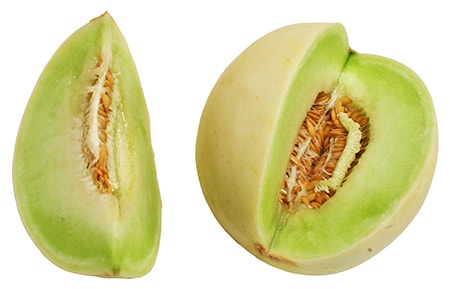
Honeydew melons are just another name for White Antibes cultivars in Algeria and France but they are the most common melon. They are grown in semi-arid regions and are a close relative of Cucumis melo.
These melons have a flesh that is very similar to cantaloupes but the outer shell is not netted. They are a part of the Cucurbitaceae family, which are gourds.
It's divided into fruits like melons and cantaloupes, and vegetables like squashes, pumpkins, and cucumbers. These cantaloupes have a white or yellow shell with a waxy feel. They have subtle green linear ridges and the flesh is light green in color.
They are a group of melons with no odor and have the same nutritional value as cantaloupes. They are 90 percent water which makes them an excellent source of hydration and provide a great deal of vitamin C.
Canary Melon
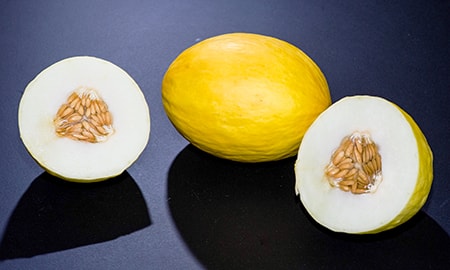
The Inodorus melon, referred to by normal people as canary melons, are visually very close to the cantaloupe inside and out. They even taste similar, albeit a bit more tangy in flavor but still sweet.
The exterior is bright yellow to orange in color while the inside flesh leans towards white. The flesh has the color and texture of a pear but is softer and sweeter.
Crenshaw Melon
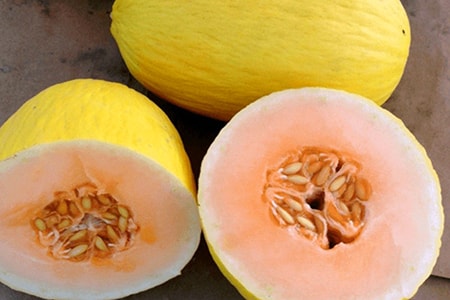
These are another variety of hybrid melons, a mix of casaba melons and Persian cantaloupes. They are often called the ‘Cadillac of Melons’ because of their great taste.
Crenshaw melons resemble their parent casaba melons quite a bit although they do not have a great flavor. But they make up for it with better shelf life and better flavor than both parents.
These melons are quite large and weigh about 8 to 10 pounds. Their outer shell is a buttercup yellow with a waxy touch and a bunch of linear ridges and furrows.
Their flesh is peachy, juicy and sweet. This cantaloupe is packed with vitamin A, B6, and C which makes them an excellent choice for fruit salads.
The Scientific Classification & Breakdown
If we're sticking to the science and not how people in general think of things, we know that Cucumis melo is "the melon" in general. It has 7 sub-species, with two main sub-species that are commercially offered in the United States, called Inodorus and Reticulatus.
The 7 sub-species of melon are:
- Cantaloupensis
- Chito
- Conomon
- Dudaim
- Flexuosus
- Indorus
- Reticulatus
Inodorus refers to melons that don't have the characteristics of muskmelons, meaning they aren't very sweet and don't have the musky odor to them. Reticulatus refers to those with an exterior resembling netting.
Within the Inodorus sub-species are:
- Canary
- Casaba
- Crenshaw
- Honeydew
Within the Reticulatus sub-species are:
- Galia
- Muskmelons
- Persian
As we know, Cantaloupensis are the "true types of cantaloupe" but people refer to many types of melons as cantaloupe due to their similar qualities and little difference in terms of culinary persuasion.
How & Why to Shop for Cantaloupes
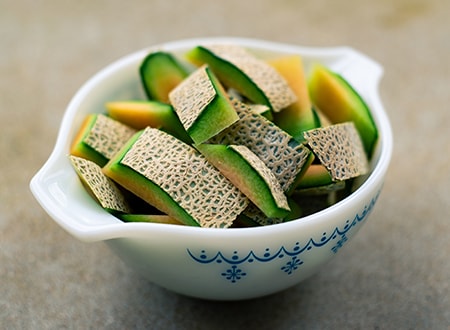
Wherever they come from, cantaloupes have a lot of nutritional content. They're loaded with vitamins C and K, folate, and phosphorus. They also have a ton of antioxidants like selenium, beta carotene, lutein, zeaxanthin, and choline.
These antioxidants help remove free radicals and prevent oxidative stress in the human body. Cantaloupes are pretty great when made into smoothies or put in fruit salads and sometimes even soups.
Because they have such high water content and electrolytes like sodium, potassium, calcium, and magnesium, they are a great snack during the summers, especially after a workout. A cup of 177 grams of cantaloupe pieces has 160 grams of water.
If you're out buying one, you must look for a cantaloupe that is firm, heavy, and symmetrical. Make sure there are no soft spots or bruising on the outer shell.
They're supposed to look bright on the outside and are sweet and juicy on the inside when in season. Otherwise, they might be hard on the outside and bland on the inside.
Types of Cantaloupe for Everyone
When you find the right one, you could dice it or slice it. They're meant to be consumed when still fresh. These fruits go really well with all types of papaya, pineapples, and mangoes. You can also slice them thin and add them to lemonade or ice tea.
If you're making a smoothie, you can combine them with pineapples, fresh or frozen strawberries, any types of guava, and unsweetened Greek yogurt. Here’s something else. You can also make salsa with them by adding them to papaya, mango, jalapeño, red peppers, and chipotle peppers.
And then there are fruit kebabs. That is correct. Combine them with honeydew melons and strawberry and serve with a yogurt dip. If you find one of the good types of cantaloupe, bring it home because there is so much to enjoy while being nutritionally mindful.




